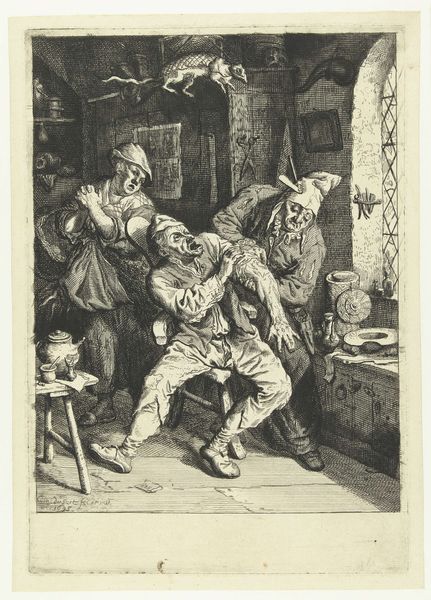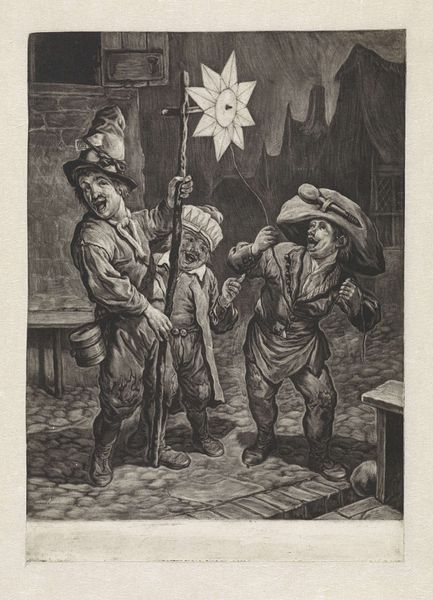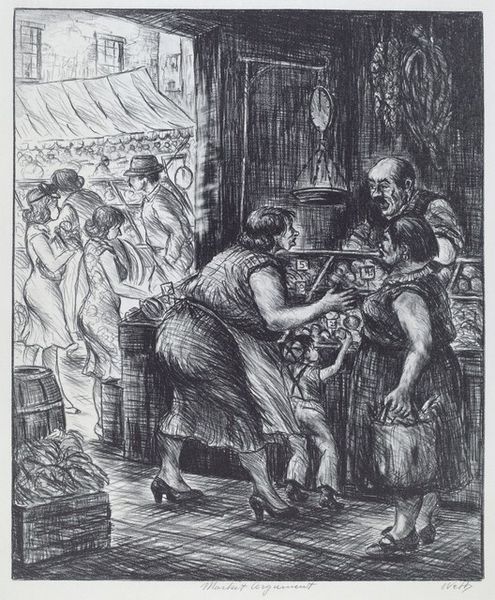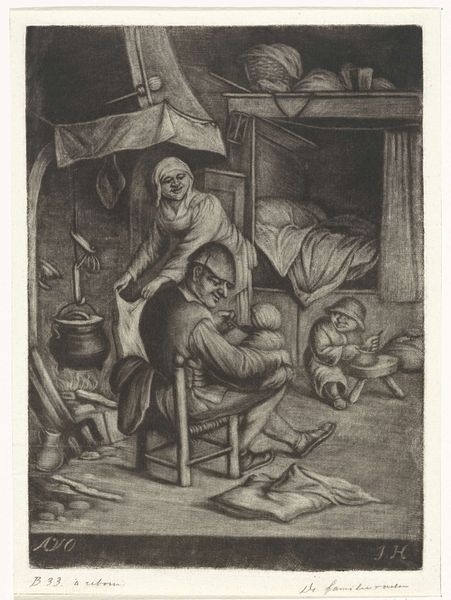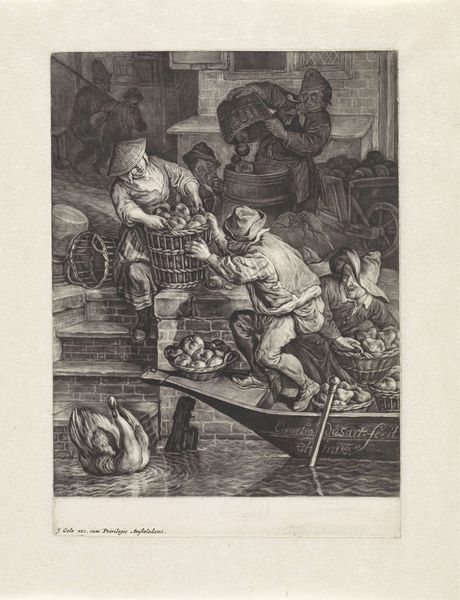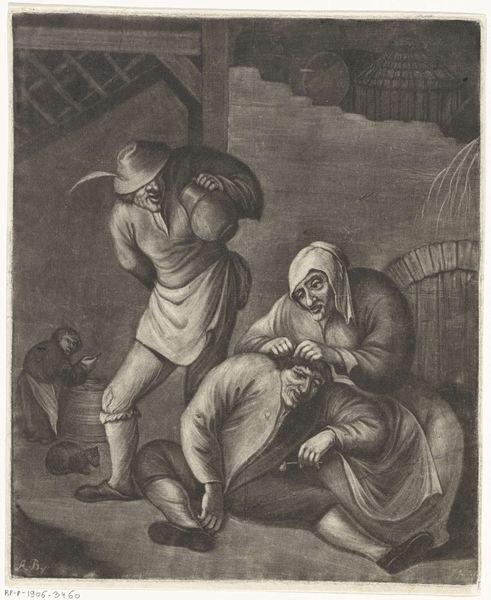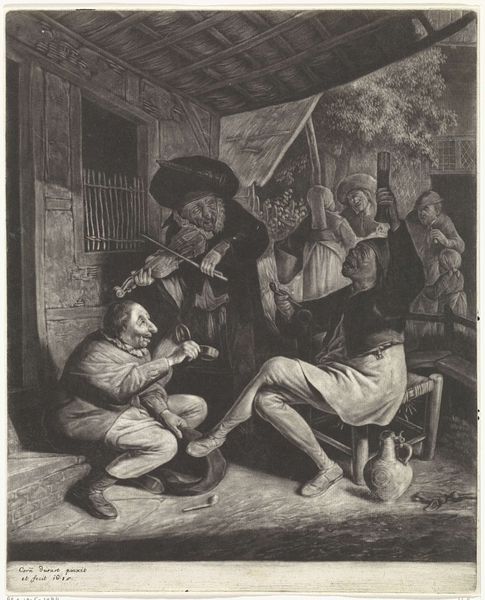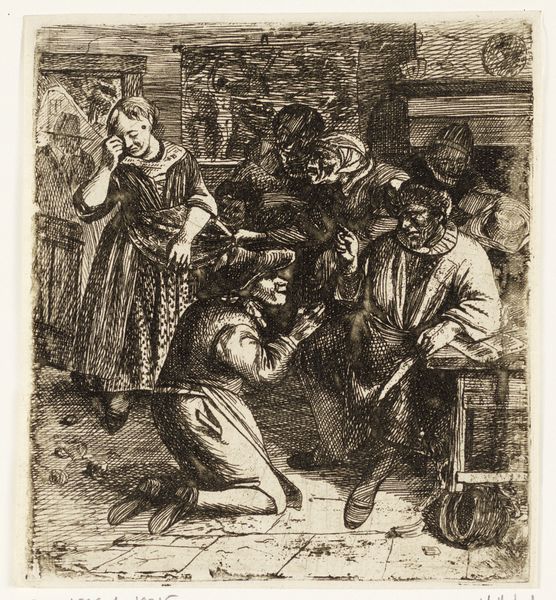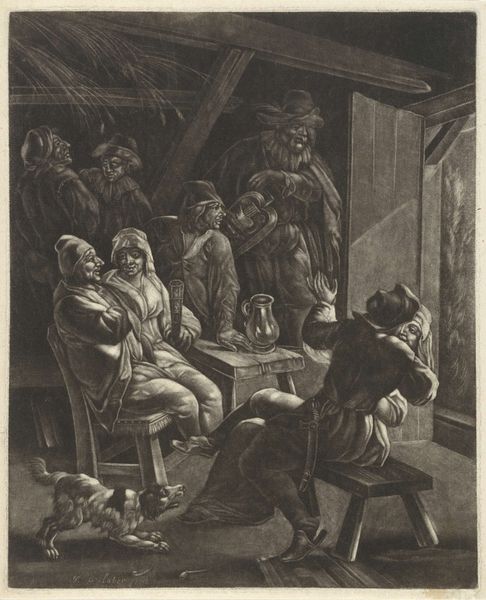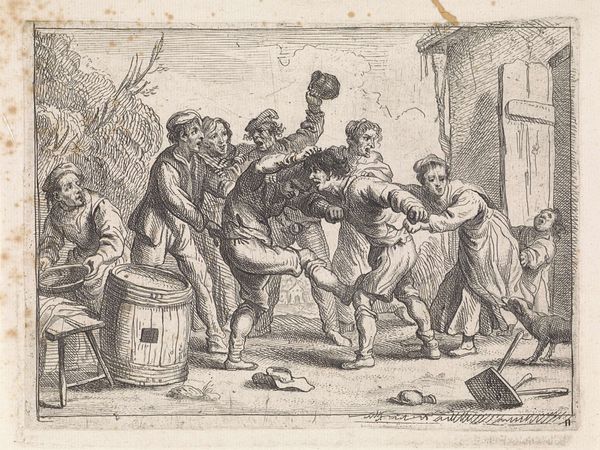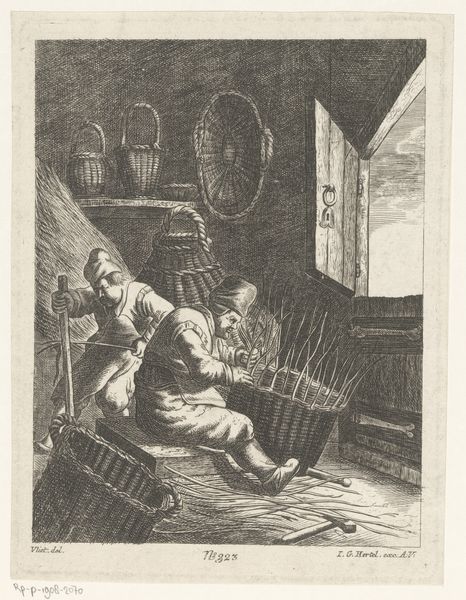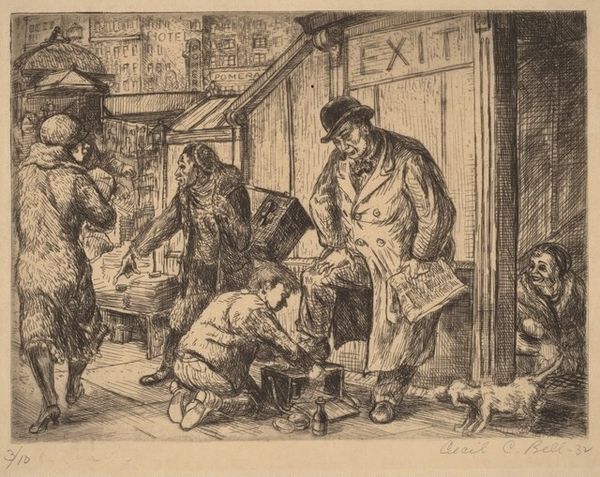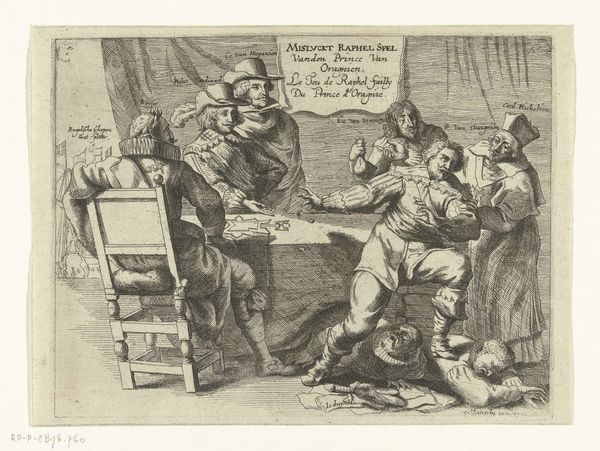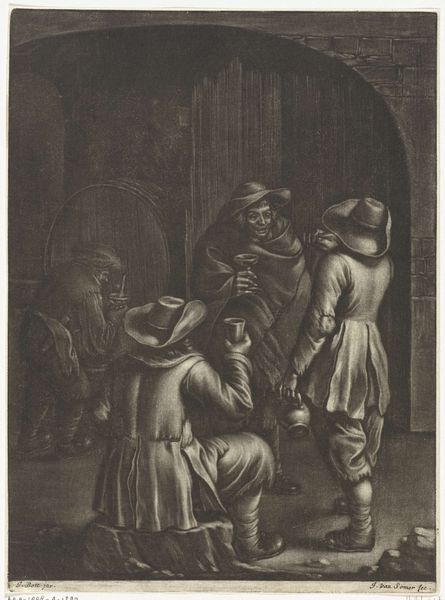
print, engraving
#
narrative-art
#
dutch-golden-age
# print
#
figuration
#
genre-painting
#
engraving
Dimensions: height 216 mm, width 154 mm
Copyright: Rijks Museum: Open Domain
Cornelis Dusart created this etching, titled "Mei," in the Netherlands, sometime between 1660 and 1704. This genre scene is filled with imagery of the springtime celebrations that would have been well-known to a Dutch audience. But what might these images mean to Dusart’s contemporaries? What can it tell us about the social context in which it was made? The tulips and roses signify the return of life after winter. The birds and chickens suggest a rural scene, but the presence of a cage hints at the restrictions of life in the countryside. Perhaps most evocative are the figures themselves, who look more like caricatures than portraits of real people. The wide grins, exaggerated features, and crude clothing invite us to laugh along with the artist at these figures. As historians, we might look to popular songs, poems, and theater from the time to give us more insight into the cultural meanings of the artwork. We need this wider understanding of the culture to fully appreciate the meaning of Dusart's "Mei."
Comments
No comments
Be the first to comment and join the conversation on the ultimate creative platform.
